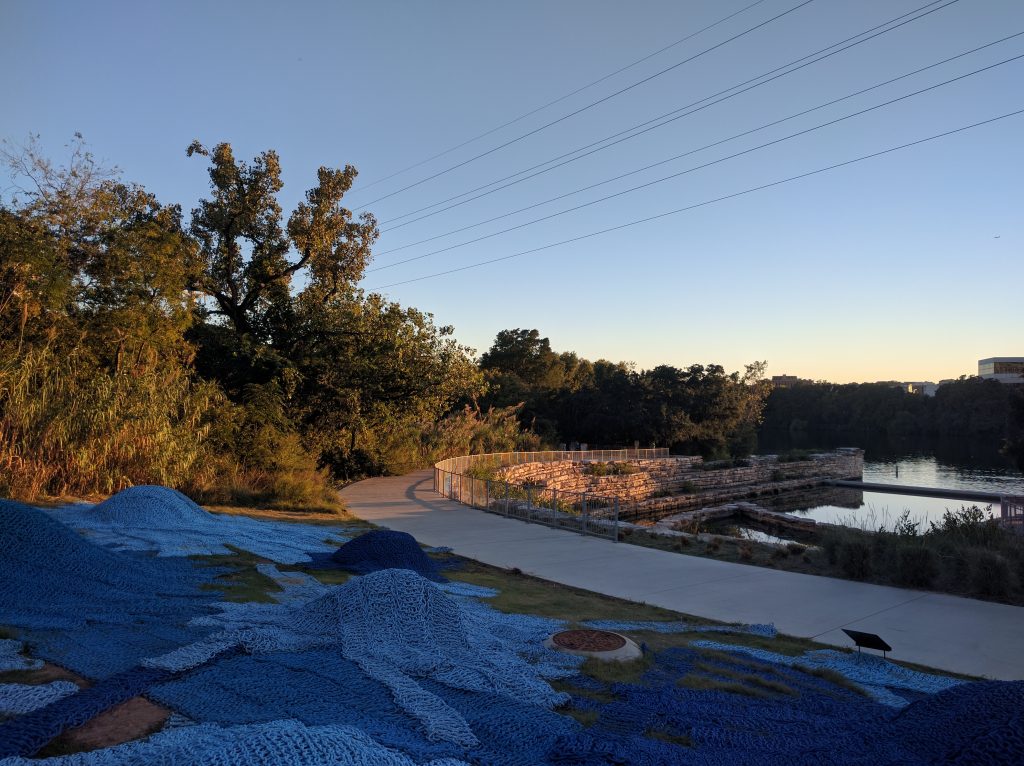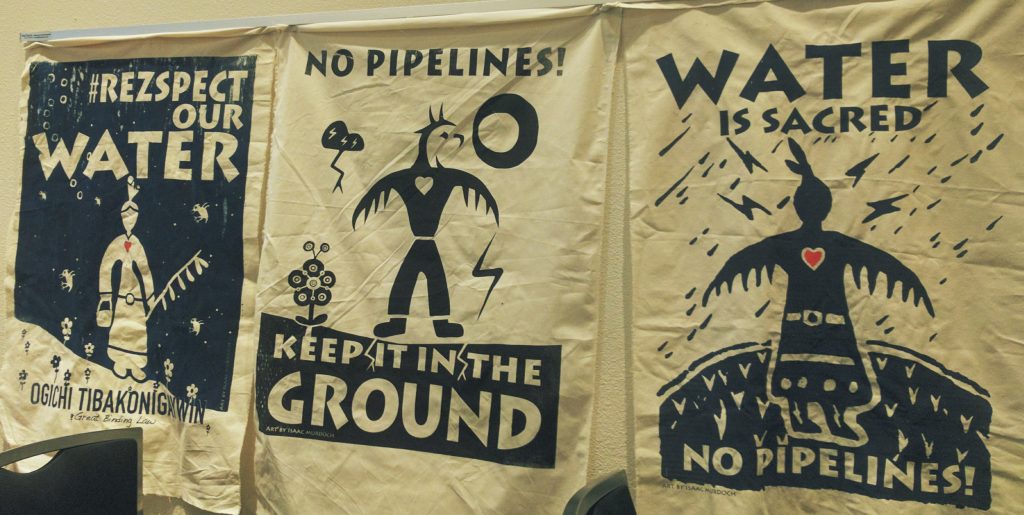“Nature is the infrastructure of community.”
– Robert F. Kennedy Jr., SXSW Eco Keynote
TKF’s NatureSacred writer Elizabeth Housley brings an update from the 2016 SXSW Eco conference happening right now October 10-12 in Austin, TX. SXSW Eco is a space for business leaders, investors, innovators and designers to share progress and ideas of emerging economic, environmental and social change.
The conference is an example of the emerging “4th Industrial Revolution” where technology becomes the backbone of human interaction with physical space. A strong theme of environmental equity runs through the conference presentations. Most are optimistic but self-critical. Attendees live vote during a design competition between urban strategy + civic engagement projects, listen to on-the-ground strategies to fight diseases and water access via pop-up architecture, and attend several workshops on corporate responsibility. Keynote speakers are game-changing leaders from the government and private sector. Robert F. Kennedy Jr., Kate Brandt and Bill Nye among the most thrilling.

Robert F. Kennedy Jr. and the Indigenous Environmental Network presented strikingly parallel calls for a reconnection to the physical world that sustains us.
“Good environmental policy is good for economic prosperity.” – Robert F. Kennedy Jr.
Mr. Kennedy’s rousing keynote speech touched on the renegade, grassroots origins of the Waterkeeper Alliance. Waterkeeper stakeholders use environmental laws, both old and new, to reclaim natural assets from industrial polluters. Citing historic laws going all the way back to the ancient Rome, Mr. Kennedy made a convincing and practical argument for stewardship of our waters.
Waterkeeper Alliance began in 1966 when Hudson River commercial and recreational fishermen united to battle corporate pollution using citizen-led “on-the-water” patrol and enforcement of environmental laws. Relying on their own knowledge and leveraging the strength of Robert F. Kennedy Jr. has resulted in numerous wins against industrial polluters.
Kennedy continues to be a leader in environmental law and advocacy. In his keynote, he addressed a recent example parallel to the Waterkeeper Alliance: “The North Dakota pipeline project, which the Standing Rock Sioux tribe contends will pollute their water supply and decimate their cultural heritage, exemplifies the effort by big business and investors to make it difficult for America to move away from fossil fuels.” Kennedy called for a realization that our democracy has become polluted by the polluters, and that a radical disruption of current practices is necessary to protect the the physical world that sustains us.
Indigenous Storytelling for the 21st Century

At this SXSW Eco panel on Monday afternoon, representatives from www.350.org and the Indigenous Environmental Network (IEN) eloquently and passionately described their role and quest to protect Mother Earth, in honor of their ancestors and their future generations. IEN leverages offline and online communications to empower Indigenous peoples in defining and voicing their selves and their communities. The network was formed by grassroots Indigenous peoples and individuals in the early 1990s to address environmental and economic justice issues. “IEN’s activities include building the capacity of Indigenous communities and tribal governments to develop mechanisms to protect our sacred sites, land, water, air, natural resources, health of both our people and all living things, and to build economically sustainable communities.”
“Indigenous Peoples are rising up at Standing Rock and around the globe to defend their ancestral homes, future generations, their cultures and sovereign rights.”- IEN
The panelists, Dallas Goldtooth and Clayton Thomas Muller, described how traditional news media is yet another example of the continuation of colonialism. The panelists are part of the movement to take back control of what it means to be a modern, Indigenous person. Dallas Goldtooth charmingly noted that a search result for “native american” often returns images of their ancestors in feathered headdresses, or shirtless sexualized men embracing a white woman. In the case of Standing Rock, nightly news has highlighted photos and descriptions of violence and conflict, without interviewing those whose livelihoods are most at stake. Like many social and environmental justice movements, digital media has had an important role in amplifying Indigenous stories and voices. The panelists noted “if you’ve been on social media or pay attention to progressive media outlets, you know that Indigenous voices are showing up more and more.”
“In the Western industrialized world, we have an absence of the sacredness of place. Climate change and the Pipeline aren’t the problem. They are symptoms of our separation from the sacred.” – Clayton Thomas Muller
Those on the ground at Standing Rock, those literally camping on the land to prevent destruction of the Missouri River and sacred sites, describe their role as ‘Water Protectors’ rather than protestors. The parallels between Kennedy’s ‘Water Keepers’ and pipeline-resisting ‘Water Protectors’ is interesting. Kennedy described Water Keepers as rogue fisherman (many in the late ’60s group were U.S. veterans) patrolling the Hudson River with intent and power. The Water Keepers decision to take action, and their need for water to sustain their livelihood, is certainly less historic and ancient than the People who have stewarded and loved the Earth’s waters long before environmental law battles existed. The panelists, each self-identified as an Indigenous Person, described how using ‘Water Protectors’ in social media is one way to redefine and take control of what it means to cherish and love the sacred earth. Water is sacred, it gives life to human beings and every living thing around us. Without, we are nothing.
Check out SXSWEco to follow Tuesday’s events or review the schedule to read more about the many business leaders, leaders, developers and designers re-defining the human relationship to the material world.
